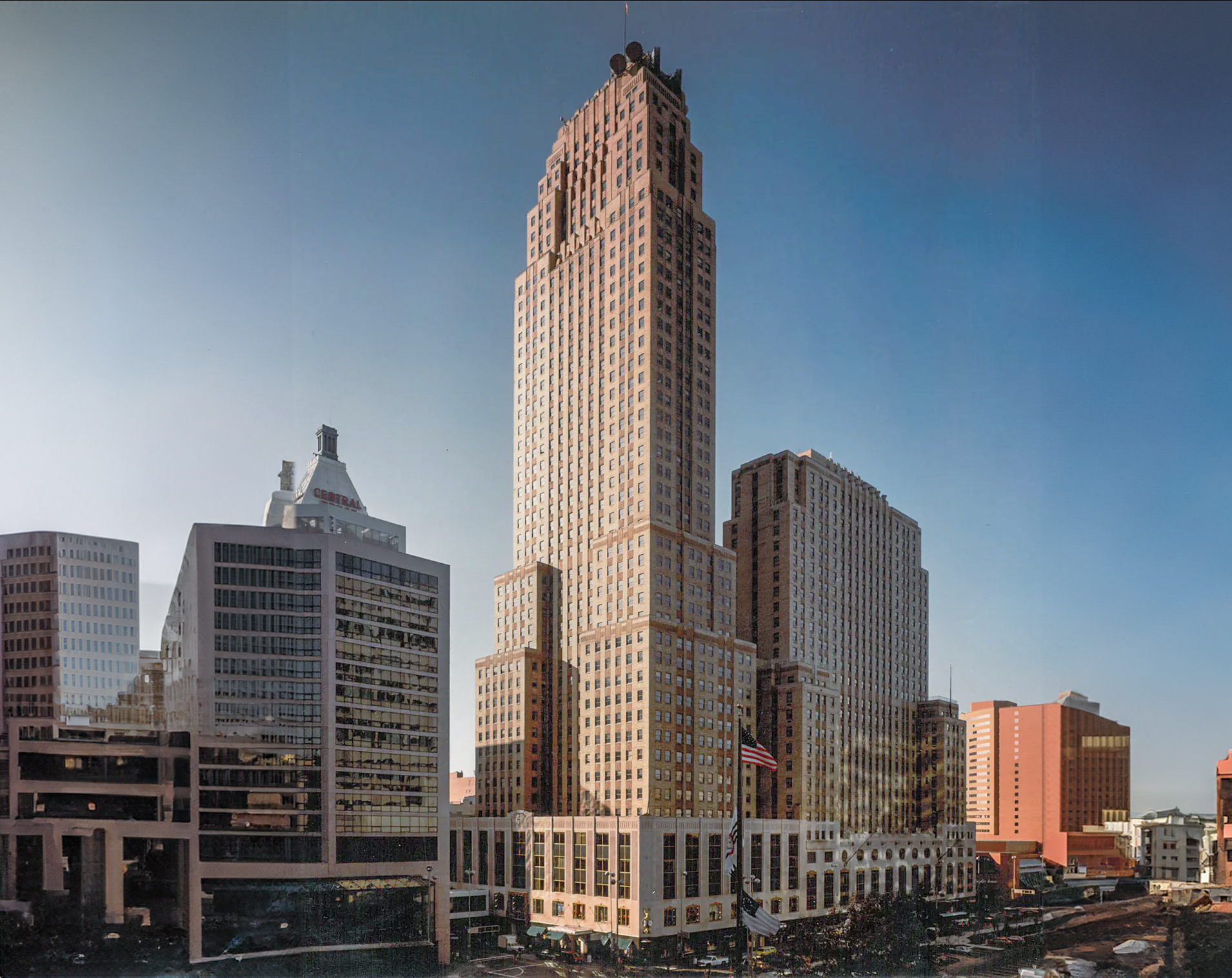The Carew Tower is an Art-deco skyscraper designed by W.W. Ahlschlager & Associates and built between 1929 and 1931, for a reported $33.0 million dollars, in Cincinnati, OH.
Carew Tower is not the only name you might know this building by though. The building is, or has also been known as Hilton Cincinnati Netherland Plaza Hotel.
Its precise street address is 441 Vine Street , Cincinnati, OH. You can also find it on the map here.
The Carew Tower is a structure of significant importance both for the city of Cincinnati and the United States as a nation. The building embodies the distinctive characteristic features of the time in which it was built and the Art Deco style. Because of that, the Carew Tower was officially declared as a national landmark on March 30th 1993, and was included in the National Register of Historic Places on April 19th 1994.
At the time of its completion in 1931 the Carew Tower incorporated solutions that were quite advanced at the time, these included advanced amenities for the time such as high-speed automatic elevators, an internal transmission system, and an automated parking system in its garage.
